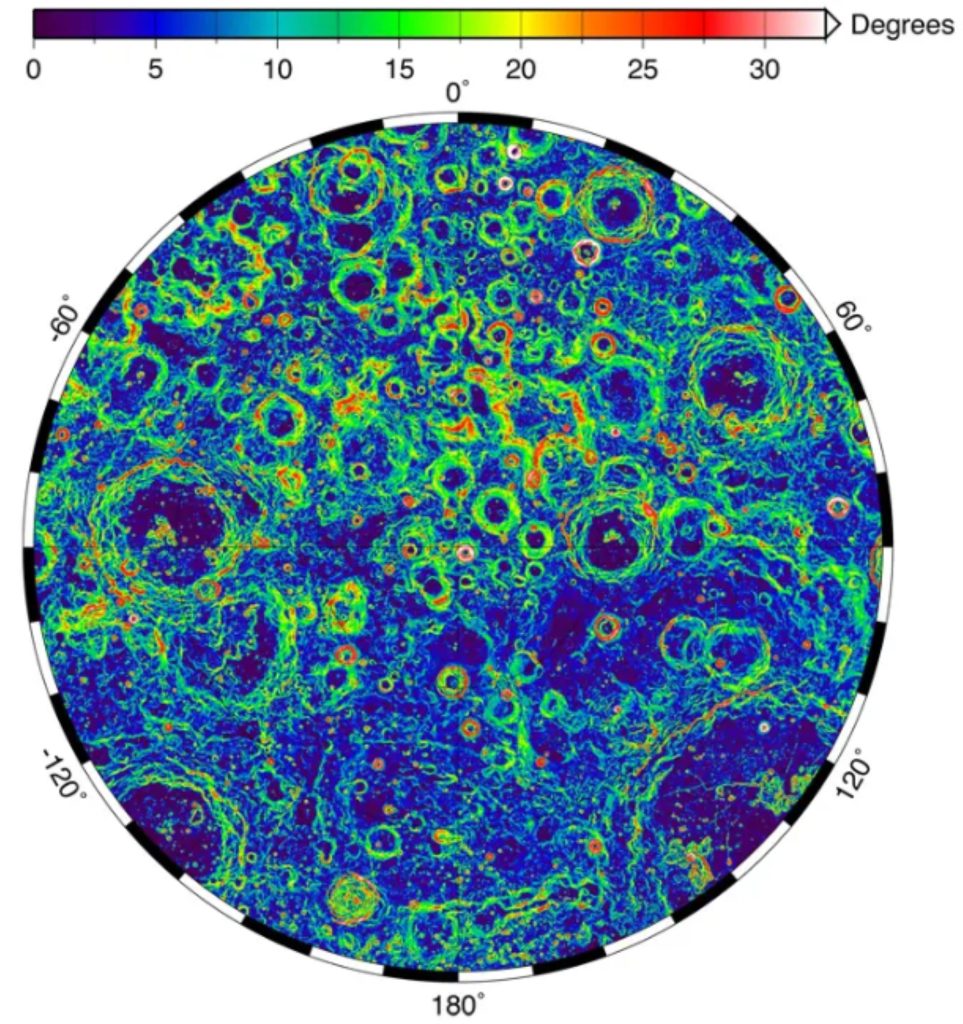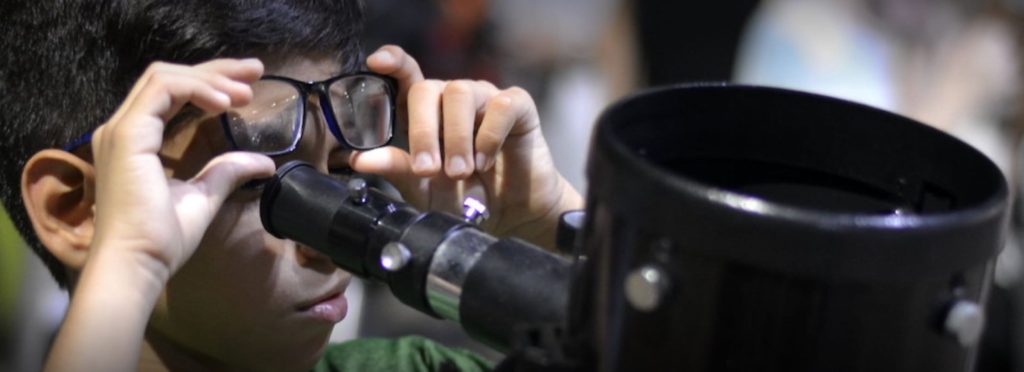Rekindle your curiosity: Take part in International Observe the Moon Night
The moon has been Earth’s constant companion for the past 4.46 billion years. It’s only 83 million years younger than its planetary pal.

They even have a lot in common. After all, the most widely accepted theory as to how our lunar neighbor was created is that the moon was formed from debris collected in orbit around Earth after being struck by another Mars-sized planet.
Our solitary natural satellite has been here for nearly every one of Earth’s major milestones, including when life first appeared about 3.8 billion years ago.
It’s one humanity’s first cosmic curiosities, as children gaze up at the bright glowing disk of a full moon in the night sky wondering what the Man in the Moon is doing as he smiles back, where the cow is going after she jumps over and whether she stopped to grab any cheese.
Rekindle that curiosity and honor cultural and personal connections to the moon tonight by taking part in International Observe the Moon Night.
The annual global event is a time for moon enthusiasts and curious people around the world to come together and learn about lunar science and exploration, take part in celestial observations during organized activities or on their own and more.
NASA encourages people to interpret “observe” broadly.
The University of Hawai‘i at Hilo Astrophysics Cub planned to install small telescopes on the lawn near the university’s science and technology building starting at 6:30 p.m. today to observe the moon.
Club advisor and astronomy professor R. Pierre Martin said that was dependent on the weather, which as of 6:15 p.m. looked pretty good, with partly cloudy skies and the moon already shining over Hilo.
“The moon is known by everybody, the comforting companion providing light at night,” said Martin, who is also observatory director and co-chairman of the UH-Hilo Physics and Astronomy Department.
International Observe the Moon Night happens each year in September or October, when the moon is around first quarter, when about half of the near side of the moon is illuminated.
NASA says this is a great phase for evening observing as it offers excellent viewing opportunities along the terminator, the line between night and day, when shadows enhance the moon’s cratered landscape.

International Observe the Moon Night is sponsored by NASA’s Lunar Reconnaissance Orbiter mission and the Solar System Exploration division at NASA’s Goddard Space Flight Center in Greenbelt, Md.
One of it’s main goals is to unite people around the globe in a celebration of lunar observation, science and exploration.
It also aims to provide information, a platform and resources to:
- Raise awareness of NASA’s lunar science and exploration programs.
- Empower people to learn more about the moon and space science and exploration using the moon as an accessible entry point.
- Facilitate sharing of moon-inspired stories, images, artwork and more.
- Inspire continued observation of the moon, sky and world around us.
- Support all people interested in learning more about and connecting with the moon.
“Outdoors, at home, online or wherever you may be, we’re glad to have you with us,” says NASA on its International Observe the Moon Night website.
Martin said the moon has played a major role in human history, from culture to religion and practical and scientific aspects, incuding defining the passage of time to the exploration of the origin and evolution of the solar system.
“It regulates tides, which have likely played an important role in the early evolution of life on Earth and continues to do so by affecting the reproductive cycles of certain marine life,” Martin said. “Many studies focus also on its possible impact on the physiology and psychology of humans.”
And with progress in space exploration, the moon likely will be the next home for some humans who will host more scientific instruments on its surface such as telescopes to continue looking into the great unknown of the cosmos.
“In many ways, observing and studying Earth’s companion, it’s acquiring better knowledge of ourselves,” Martin said.
Ancient Hawaiians personified the moon as the goddess Hina, calling it Mahina. The moon played a significant part in their lives.
It was the base for their calendar and a dependable source of information crucial for survival.
Hawaiians developed planting and fishing strategies to maximize yields by aligning their practices with lunar phases, such as harvesting and resting fishing grounds and gardens.
Did you know that we only ever see one side of the moon from Earth?
The interplay of gravity between Earth and its satellite slows the moon into a rotation that paces its planetary companion’s. So the moon rotates, but it rotates at the same speed that it orbits Earth, keeping the same side always turned toward us. This is called being “tidally locked.”
The moon also has no glow of its own. Instead, it shines with the reflected light of the sun.
During the crescent phase in the twilight or dawn, you can see the dark part of the moon glowing faintlly sometimes in the sunlight that reflects off Earth. This is called earthshine.
Of course, you can see the moon just by eyeballing it. Allowing your eyes to adjust to the dark and looking carefully, you might be able to see some of the larger features such as impact craters including Copernicus, Kepler and Aristarchus and Tycho.

You might even be able to observe some of the bright streaks emanating from the Copernicus or Tycho craters, created when debris was blasted out from the original impacts.
Looking through binoculars will transform what you see of the moon’s surface, bringing its terrain into focus. Using a telescope, you’ll get to see real mountains and not just craters, but crater chains as well as other features such as valleys and cracks in the moons surface formed by lava that once filled a basin and cooled and contracted.
If you can’t make it to an event or out of the house, participate online from wherevery your are.
Connect with other lunar enthusiasts from around the world via Facebook, use #ObserveTheMoon on your preferred social media platform and check out the International Observe the Moon Night Flickr group.
You can also check out NASA’s 10 ways to observe the moon.

It doesn’t matter how, it just matters that you do, and NASA wished everyone happy observing.
If you want to share how you celebrated International Observe the Moon Night, post your experiences on social media using #ObserveTheMoon.
The moon is the brightest and easiest celestial object for us to look at in the night sky. It’s also the closest, all reasons why we keep looking up at it in wonder. Martin offered a few others.
“It’s impact on humanity cannot be overstated and yet, even today, we do not have a complete scenario of its origin,” he said. “There is a lot of current scientific interests in the moon, and it’s just beautiful!”
Sponsored Content
Comments















